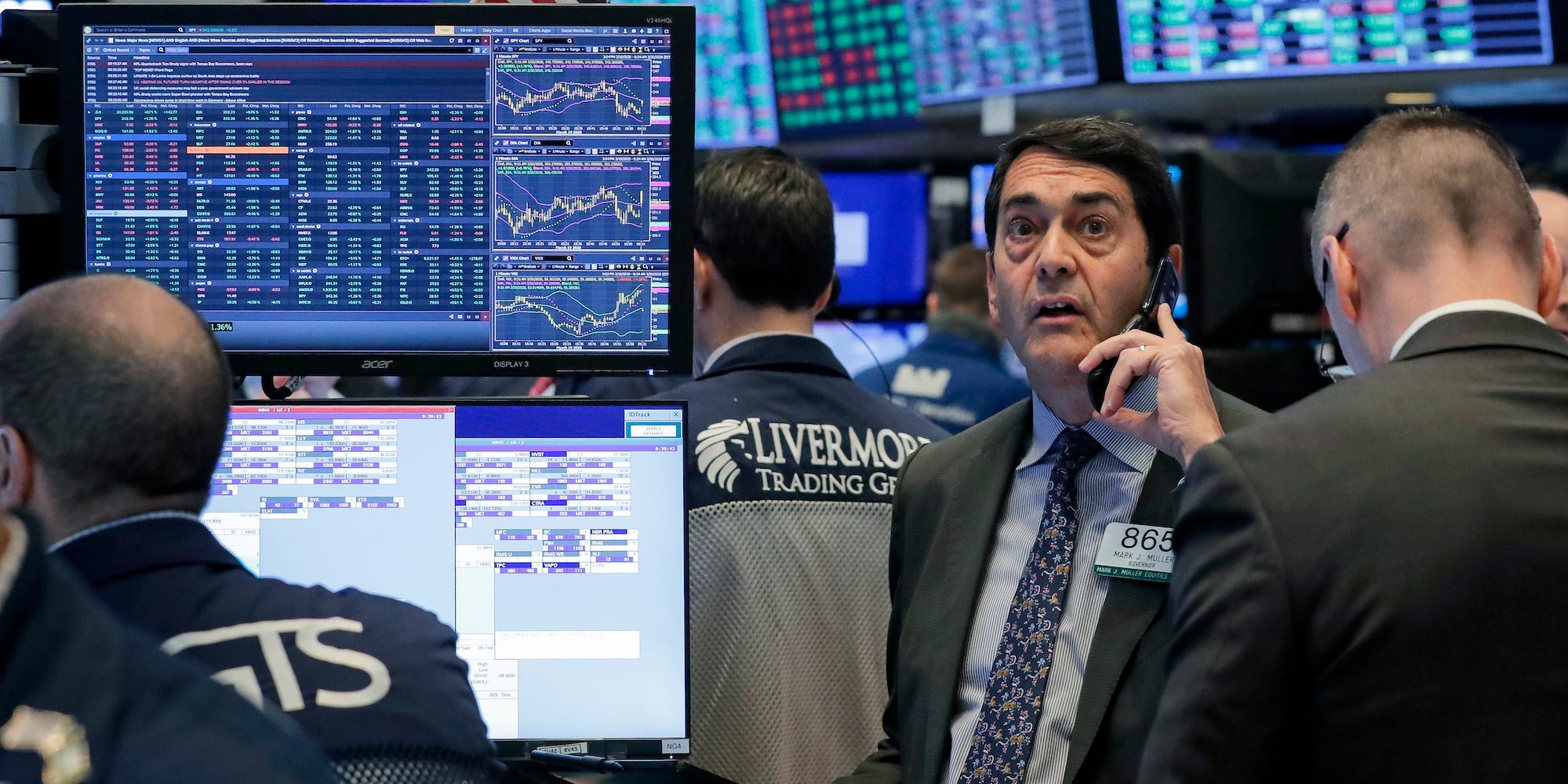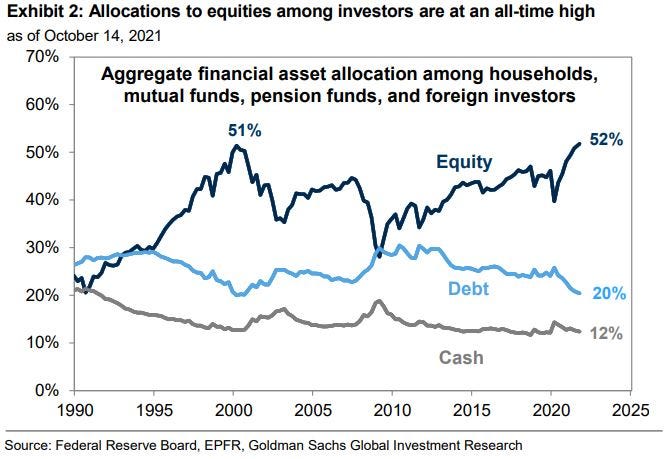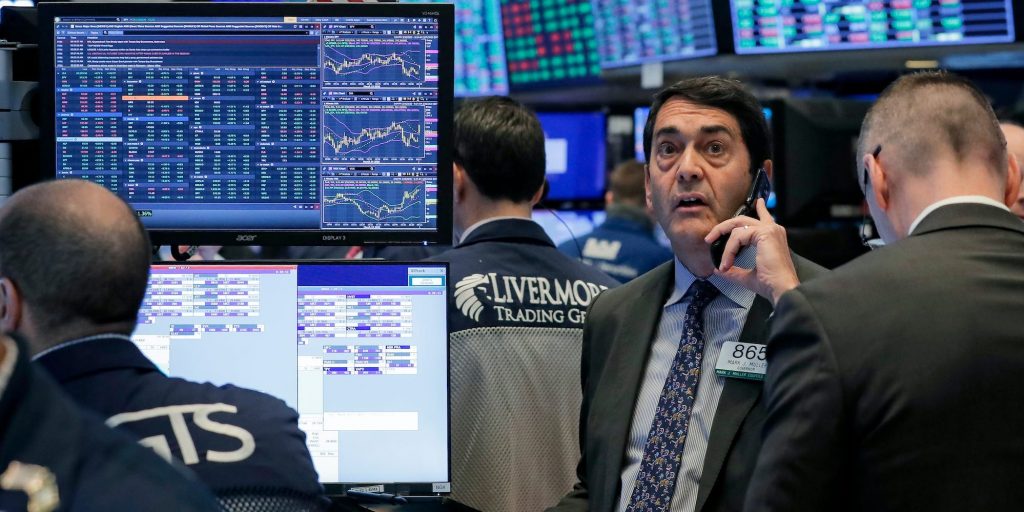
- Investors' allocations to stocks eclipsed the level seen in the dot-com bubble, hitting 52% this year.
- Goldman Sachs thinks stocks' share of financial assets will continue to hit records in 2022.
- The continued rise will be driven by low yields and a surging cash pile among consumers and corporations.
- Sign up here for our daily newsletter, 10 Things Before the Opening Bell.
Investors' allocations to US stocks eclipsed the level seen in the dot-com bubble and hit a record high of 52% in 2021, Goldman Sachs said in a note on Friday.
Goldman thinks the surge in equity allocations among investors will continue higher next year as investors grapple with low interest rates and an ever-growing pile of cash.
Households alone own half of the $28 trillion in US cash assets, or $14 trillion, according to Goldman. That, combined with historically low interest rates and unappealing fixed-income alternatives, means more cash will be funneled into stocks next year as investors stretch for returns.
"A near-record 57% of S&P 500 stocks have an annualized dividend yield greater than the investment grade index, implying more income than bonds and the potential for capital gains (or losses)," Goldman highlighted.
Corporations will likely be the largest source of demand for stocks as buyback activity and mergers hit new records, according to Goldman. The bank estimates that companies will buy at least $350 billion worth of stocks next year, while households and foreign investors will drive $300 billion worth of stock demand.
Despite uncertainty around future economic growth, rising inflation, and supply-chain disruptions, Goldman said equity allocations should still increase if growth expectations rise, policy uncertainty declines, or consumer confidence moves higher.
Investors and corporations will likely be buying stock next year from mutual funds and pensions, according to Goldman, expecting a combined $400 billion of sales coming from both groups.
"Continued normalization toward trend economic growth and lower volatility should support flows into passive funds over active mutual funds," Goldman said, pointing to the ongoing trend of passive investments surging at the expense of higher-cost active funds.
Goldman's 2022 equity demand forecasts will largely be dependent on earnings growth, but Bank of America thinks rising inflation and a Fed policy shift could throw a wrench into that bullish outlook.

